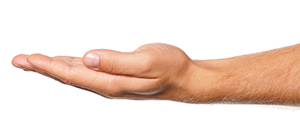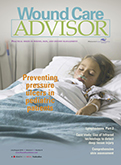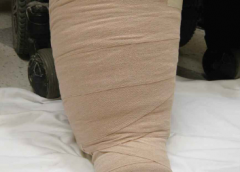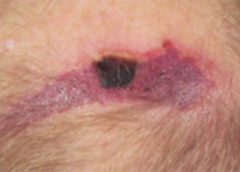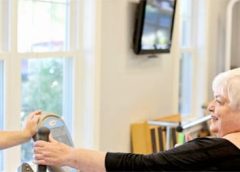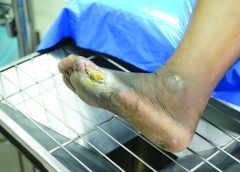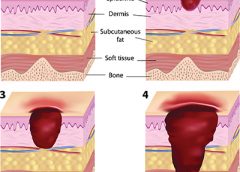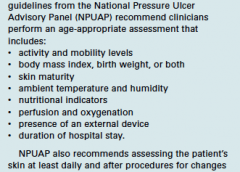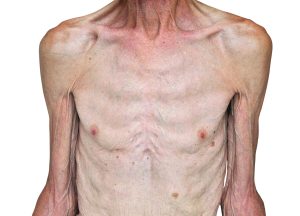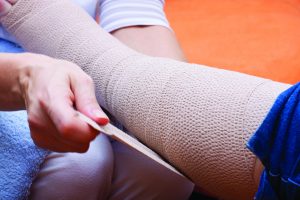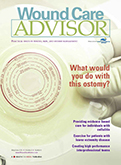Search Results for: D
Clinician Resources: NPUAP, Pressure Ulcer Treatment, NIOSH
The resources below will help you address issues in your practice.
NPUAP position statement on hand check for bottoming out
Use of the hand check to determine “bottoming out” of support systems should be limited to static air overlay mattresses, according to a position statement from the National Pressure Ulcer Advisory Panel (NPUAP). (more…)
Read More2015 Journal: July – Aug Vol. 4 No. 4
Clinician Resources: Nutrition, Treatment Algorithms, Pressure Ulcer Prevention
Check out these resources for your practice.
Be a nutrition champion
One in three patients enters a hospital malnourished. Fight malnutrition by viewing six short videos from the Alliance to Advance Patient Nutrition, including “Rapidly Implement Nutrition Interventions” and “Recognize and Diagnose All Patients at Risk of Malnutrition.” The videos show how to collaborate with the care team to become champions of nutrition and help improve patient outcomes. Watch the videos online or download them for later viewing. (more…)
Read MoreImmobility as the root cause of pressure ulcers
By Jeri Lundgren, BSN, RN, PHN, CWS, CWCN
Many factors can contribute to the formation of a pressure ulcer, but it’s rare that one develops in an active, mobile patient. As the National Pressure Ulcer Advisory Panel 2014 guidelines state, “Pressure ulcers cannot form without loading, or pressure on the tissue. Extended periods of lying or sitting on a particular body part and failure to redistribute the pressure can lead to ischemia and therefore tissue damage.” Thus, immobility is frequently the root cause of pressure ulcer development. (more…)
Read MoreComprehensive skin assessment
By Nancy Morgan, RN, BSN, MBA, WOC, WCC, DWC, OMS
Each issue, Apple Bites brings you a tool you can apply in your daily practice. Here’s an overview of performing a comprehensive skin assessment.
In the healthcare setting, a comprehensive skin assessment is a process in which the entire skin of a patient is examined for abnormalities. It requires looking at and touching the skin from head to toe, with a particular emphasis on bony prominences and skin folds. Comprehensive skin assessment is repeated on a regular basis to determine whether changes in the skin’s condition have occurred. The goal of a skin assessment is to identify problem areas promptly for treatment and prevention. (more…)
Read MoreClinical Notes: Revascularization, Amputation Risk Score
Leg revascularization fails to improve outcomes in nursing home patients
Lower-extremity revascularization often fails to improve outcomes in nursing home patients, according to an article in JAMA Internal Medicine.
“Functional outcomes after lower extremity revascularization in nursing home residents: A national cohort study” found that few patients are alive and ambulatory a year after surgery, and those who are alive have little, if any, gain in function. The study, which included 10,784 patients, was based on data from nursing homes participating in Medicare or Medicaid. (more…)
Read MoreMotivational interviewing: A collaborative path to change
By Sharon Morrison, MAT, RN
Michael had diabetes and a history of elevated blood glucose levels. A long-time drinker, he seemed to have no interest in giving up the habit. I met him while working as a diabetes nurse educator for the Boston Health Care for the Homeless Program, traveling from shelter to shelter to help persons with diabetes set goals to improve their health.
If our meeting had taken place a decade earlier, I might have given Michael information about diabetes and talked with him about his alcohol use. I would have encouraged him to stop drinking by explaining the problems alcohol can cause for people with diabetes. (more…)
Read MoreHelping patients overcome ostomy challenges
By Beth Hoffmire Heideman, MSN, RN
No one wants an ostomy, but sometimes it’s required to save a patient’s life. As ostomy specialists, our role is to assess and intervene for patients with a stoma or an ostomy to enhance their quality of life. We play an active role in helping patients perform self-care for their ostomy and adjust to it psychologically, starting even before surgery. (more…)
Read More2015 Journal: May – June Vol. 4 No. 3
Clinician Resources: Nutrition, Workplace Violence, Pressure Injuries
Learn about resources useful to your practice.
Nutrition and pressure ulcers
Advances in Skin & Wound Care has published “The role of nutrition for pressure ulcer management: National Pressure Ulcer Advisory Panel, European Pressure Ulcer Advisory Panel, and Pan Pacific Pressure Injury Alliance White Paper.” The white paper includes evidence-based nutrition strategies for preventing and managing pressure ulcers. (more…)
Read MoreCreating high-performance interprofessional teams
By Terry Eggenberger, PhD, RN, CNE, CNL; Rose O. Sherman, EdD, RN, NEA-BC, FAAN; and Kathryn Keller, PhD, RN
Kate Summer, a wound care clinician in a urban hospital, is leading an initiative to reduce pressure ulcers. She knows from experience that more effective communication and collaborative planning by the interdisciplinary team managing these patients is crucial for reducing pressure ulcers. But doing this has been challenging for Kate. (more…)
Read More
